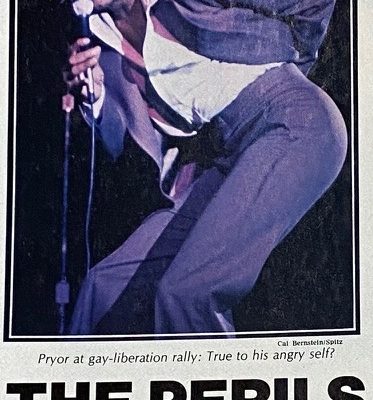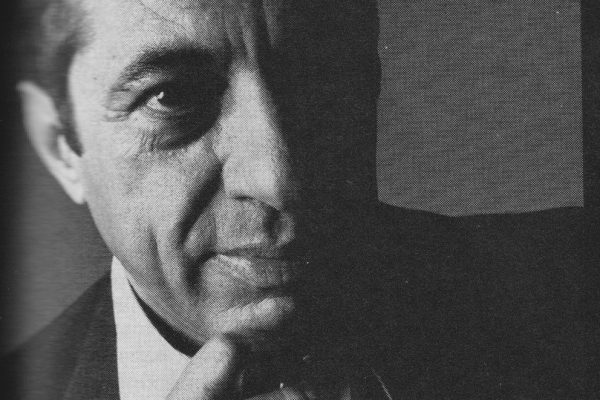Original Publication: New York Woman, August, 1986.
Once upon a time the lovely princess would have needed nothing more than a white embossed card which read “Princess Elizabeth of Yugoslavia, At Home, etc.” Anyone who mattered would then know automatically that she was ready to be called upon. These days, however, your own royal initials are not enough. Peddling the pedigree is a complex proposition. One just can’t hang out a sign saying, “Have title will travel.”
Looks, charm, sophistication are fine, but it takes work to plant all those column items. In Suzy, the princess is dashing off to a White House dinner: on Page Six she’s entertaining Claus von Bulow at an exhibition of her new son-in-law’s paintings. The Daily News has the scoop she’s taking acting lessons and moving back to New York (read “available”), though she’s been living here on and off since 1979.
In fact, the princess barely has time to return from rescuing her friend, photographer Peter Beard, from a trumped-up jail sentence in Kenya, when she has to check in for her live cell injections – extracted from unborn ewes – at Clinic La Prairie in Switzerland. La Prairie is conveniently located in the small village where the princess spent part of her youth; she is now La Prairie’s spokeswoman in the U.S., and though Princess Elizabeth is 50, across a room she looks 35. One wonders whether her dark beauty isn’t really the result of her own distinguished bloodlines instead of the baby ewes’. “Before the injections I looked 102,” deadpans the princess.
Already, she and her eldest daughter, actress Catherine Oxenberg, late of “Dynasty,” have posed together for cosmetic ads, and there is the ripple effect of one great face breeding another. The princess is also writing her autobiography. It could very easily be Little Elizabeth Free at Last, and who knows, maybe Catherine can star in the mini-series for the first few nights with mummy taking over for the denouement.
To help plot her commercial strategy, the princess had retaind the manager of Olympic gold medalist Mary Lou Retton. Admittedly, it’s hard to imagine the princess’s refined face on a Wheaties box, but in these high fiber times, why not? The princess herself would like to become a movie star, but hey, she cuts a wide social swath – from entertaining her favorite cousin, the Prince of Wales, to accompanying her black, ex-combat vet physical-fitness instructor home to Milwaukee to his family reunion – and she willing to listen to offers. Although the princess’s lifestyle hard suggests a fall from riches to rags, one does wonder how she’s gotten by all these years on pedigree alone. (The princess is regally demure.)
“There is quite a market now for middle-aged women,” says the princess in her clipped British accent. “No longer is it essential to be blonde and eighteen. So many women feel awful because they’re not blonde and eighteen. You’ve got to cheer them up.”
You certainly do. And after spending a few hours in her pied a terre-like garret high above 58th Street on the West Side, my advice would be for her to get going on the autobiography fast. Prime time will adore it.
Naturally it begins in a castle. But wait. A light rain is falling on the terrace outside the princess’s small sitting room as she starts to speak. She is dressed plainly in a white jumpsuit, and she seems tense and winsome. Yes, she could be linked to 1,001 nights in café society, and yes, she never goes anywhere without her title; yet she has a haunting vulnerability, the flip side of Audrey Hepburn in My Fair Lady. “‘Isn’t it glamourous being a princess?’ People always say that to me. ‘What does it feel like?’ It is interesting to point out nothing is as it seems,” she says.
Ironically, the castle was called The White House, just outside Belgrade, but the princess barely got to live in it. When she was 4, her learned father, Prince Paul of Yugoslavia, who was ruling the country until his young nephew, King Peter, could take over, lost the monarchy. Pressured by both the British and the Nazis and facing a revolution, he was forced to flee the country. The royal family, including two older brothers and her mother, Princess Olga of Greece, first cousin to the Duke of Edinburgh, were exiled to deepest Kenya, 70 miles from Nairobi. They arrived with $200 cash and one nanny.
The family migrated first to South Africa and then to Switzerland. The princess describes the English boarding school and French convent she attending as “gulags.” Neither parent was affectionate, and little Elizabeth grew up thinking she was hideous. “My father made it clear I was not slim and elegant like my mother, not as tall as she. My lips were terrible, my tits were too big. He was intimidating.” Her mother merely found fault. “It was very difficult to be constantly criticized by an unloving person,” the princess reflects.
The state was set for rebellion, and rebel she did. Forbidden to attend college by her father, the princess, at age 23, ran off to America with a divorced man 20 years older than she was, four days after she met him on a ski slope. (Her father refused to forgive her, even as he lay dying of leukemia years later.) Princess Elizabeth quickly married Howard Oxenberg, who worked in the garmet business in New York, and they had two dauthers, Catherine, 25, and Christina, 23. After the marriage broke up, the princess moved back to Europe and married again – a British banker who was half Peruvian, an aspiring politician named Neil Balfour. She campaigned in the cold north country with him as he twice ran unsuccessfully for Parliament. In London she became a hostage of note, and she had a son, Nicholas, now 16. But that marriage didn’t last either. “I think one of the reasons I married him was that I liked his mother so much,” she says now.
The next interlude was a brief one with Richard Burton, “glamourous and lovely, but I couldn’t stick with him because of the drinking.” The two had met on the London social circuit and acted in an unfinished film together, Jackpoe, with Charlotte Rampling, and the experience whetted the princess’s appetite for a film career – even though she watched closely as her daughter was booted from “Dynasty” last season by the “soulless Hollywood establishment.” Actually she was relieved for Catherine. “I hated that petulant, spoiled, bad-tempered bitch she played. Very unattractive. I myself would love to go into movies, but I’d hate to do a series. It’s so dreary.”
By now the rain has become a steady downpour, and the princess has walked over to urge me to feel her granitelike thighs and “bump” (i.e., her behind), the result of the painful isometric exercises she faithfully pursues. She is confessing her chocoholism, particularly with Mars bars, “The bliss of crunching through the outer dark chocolate into the caramel . . .” when suddenly the phone rings.
It is ex-husband number two, Neil Balfour, placing a trans-Atlantic call to her from his car on the way to Wimbleton. They get cut off.
“Damn,” the princess says softly.
The phone rings again. She picks it up.
“Yes. Now do go on about Cecil B. DeMille.”
He can’t. They’re cut off a second time. The third time the connection is clear.
“Silly! . . . Tell me . . . You didn’t! Listen, can I book in now so we can spend Christmas together. I might stay in Austria with my girlfriend . . . You’re so wonderful, Neil.”
For the briefest of moments, Princess Elizabeth seems to relax: a dear friend is on the phone, and beyond the terrace glistening with raindrops all of Manhattan awaits.
This article is typed from the original material. Please excuse any errors that have escaped final proofreading.



